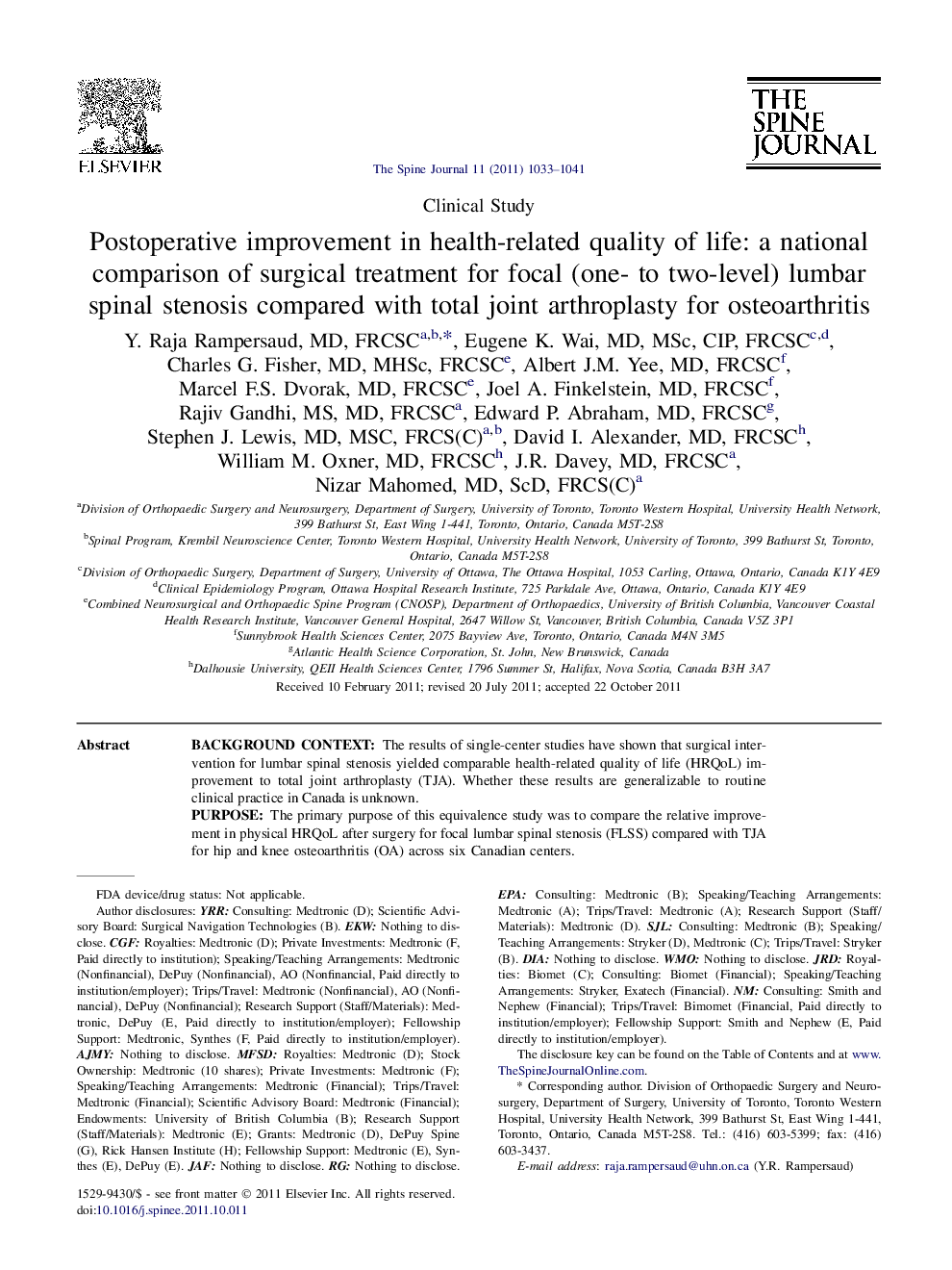| کد مقاله | کد نشریه | سال انتشار | مقاله انگلیسی | نسخه تمام متن |
|---|---|---|---|---|
| 4097664 | 1268595 | 2011 | 9 صفحه PDF | دانلود رایگان |

Background contextThe results of single-center studies have shown that surgical intervention for lumbar spinal stenosis yielded comparable health-related quality of life (HRQoL) improvement to total joint arthroplasty (TJA). Whether these results are generalizable to routine clinical practice in Canada is unknown.PurposeThe primary purpose of this equivalence study was to compare the relative improvement in physical HRQoL after surgery for focal lumbar spinal stenosis (FLSS) compared with TJA for hip and knee osteoarthritis (OA) across six Canadian centers.Study design/settingA Canadian multicenter ambispective cohort study.Patient sampleA cohort of 371 primary one- to two-level spinal decompression (n=214 with instrumented fusion) for FLSS (n=179 with degenerative lumbar spondylolisthesis [DLS]) was compared with a cohort of primary total hip (n=156) and knee (n=208) arthroplasty for OA.Outcome measuresThe primary outcome was the change in preoperative to 2-year postoperative 36-Item Short Form Health Survey Physical Component Summary (PCS) score as reflected by the number of patients reaching minimal clinically important difference (MCID) and substantial clinical benefit (SCB).MethodsUnivariate analyses were conducted to identify baseline differences and factors that were significantly related to outcomes at 2 years. Multivariable regression modeling was used as our primary analysis to compare outcomes between groups.ResultsThe mean age (years) and percent females for the spine, hip, and knee groups were 63.3/58.5, 66.0/46.9, and 65.8/64.3, respectively. All three groups experienced significant improvement of baseline PCS (p<.001). Multivariate analyses, adjusting for baseline differences (age, gender, baseline Mental Component Summary score, baseline PCS), demonstrated no significant differences in PCS outcome between spinal surgery and arthroplasty (combined hip and knee cohorts) patients with an odds ratio of 0.80 (95% confidence interval [CI], 0.57–1.11; p=.17) and 0.79 (95% CI, 0.58–1.09; p=.15) for achieving MCID or SCB, respectively. In subgroup analysis, spine and knee outcomes were not significantly different, with hip arthroplasty superior to both (p<.0001).ConclusionsSignificant improvement in physical HRQoL after surgical treatment of FLSS (including DLS) is consistently achieved nationally. Our overall results demonstrate that a comparable number of patients can expect to achieve MCID and SCB 2 years after surgical intervention for FLSS and total knee arthroplasty.
Journal: The Spine Journal - Volume 11, Issue 11, November 2011, Pages 1033–1041